
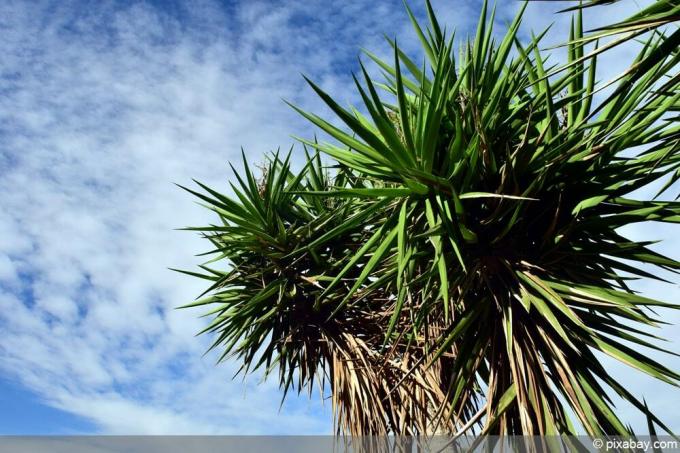
Table of contents
- Only from 20 degrees in the garden
- Protected locations only
- It has to be dry
- Watering and fertilizing outdoors
- Hardy yuccas
- Why go outside at all?
The Yucca elephantipes, the Latin name for the Yucca palm, has been an integral part of German living rooms for many years. No wonder: it not only looks impressive, but is also extremely easy to care for. If you bring a yucca into your home, you don't have to worry too much about it. You certainly don't need the famous green thumb. In summer you can even put them comfortably outside in the garden - as long as you pay attention to a few points.
Only from 20 degrees in the garden
The yucca palm originally comes from the semi-desert areas of Central America. So she loves it warm. Cold or even icy temperatures are definitely not her thing. On the contrary: temperatures around or just above freezing can kill the plant. This need for warmth should therefore always be kept in mind when it comes to putting them outside. This is generally not a problem during the summer months. This even has a positive effect on the growth of the yucca. However, you should be sure that a temperature of at least 20 degrees Celsius is reached during the day. In our latitudes, you are therefore usually only on the safe side from June. Basically, the months of June, July and August are suitable for placing the Yucca elephantipes outdoors.
The months of May and September, on the other hand, are always associated with a certain risk - the temperatures can drop considerably in these months. But even in midsummer you should always make sure that it doesn't get too cool. If in doubt, the plant must be brought indoors. It is also of great importance that it remains in its planter. Planting them in the ground in the garden will not work. As easy to care for as the yucca is in general, it is particularly sensitive.
Protected locations only
Of course, you can't just position your yucca palm tree anywhere outdoors. Rather, the location has to meet a few basic conditions if you don't want to experience any unpleasant surprises. The elementary needs of the plant play a central role here - and they apply both indoors and outdoors. Yucca elephantipes likes it warm, light and sheltered from the wind. A draughty location is therefore prohibited, as is a shady one. On the other hand, too much sunlight initially takes some getting used to for the yucca. You can get a kind of sunburn from it, which is expressed by unsightly brown spots on the leaves. In general, the plant first has to get used to being in direct sunlight.
Tip:
In order to get the yucca palm tree used to a location directly in the sun, it is advisable to put it in phases at a window on the sunny side while still in the apartment. Outdoors, too, the location should then be adjusted step by step, for example by first placing them on the terrace or balcony.
It has to be dry
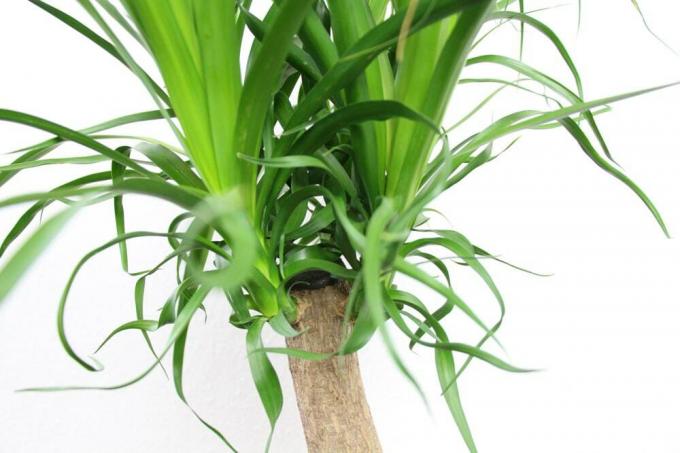
Because of its origin alone, the yucca appreciates a rather dry climate. If it is outdoors, it must be protected from moisture and, of course, from rain in particular. If the summer turns out to be wet and cold, the plant should be returned to the apartment immediately. Too much wind or She does not tolerate drafts. On the one hand, this means that the Yucca elephantipes gets too cold, on the other hand, damage can be caused by storms, for example. In short: the right location plays an enormously important role. Here are the most important points to keep in mind.
- Only put outdoors in the summer months when the temperature is around 20 degrees
- Dry location protected from rain and wind
- Avoid drafts
- Direct sunlight is possible, but the plant must be gradually accustomed to it
- Always leave the yucca in its planter in the garden
Watering and fertilizing outdoors
Even if the yucca palm is in the garden, it must be watered and fertilized regularly. Above all, it needs significantly more water than is the case in the apartment, for example. In no case should you save on the water. At the same time, however, you should make sure that no waterlogging forms. Wet feet are death for a yucca. In addition, the plant must also be supplied with nutrients on a regular basis. It is best to use a commercial liquid fertilizer. A rhythm of two weeks has proven itself.
Hardy yuccas
The Yucca elephantipes is not hardy and therefore cannot remain outdoors permanently. However, there are hardy yucca species that can be continuously cultivated outside in the garden. These include, for example, the Yucca gloriosa, the Yucca baccata or the Yucca filamentosa. They survive even a relatively harsh winter and consistently icy temperatures. If in doubt, they can be protected by a garden fleece or another cover - for example when a lot of snow falls. If individual leaves dry up during the winter months, there is no reason to panic. The plant will reliably sprout again in spring.
Why go outside at all?
Of course you can leave the yucca palm in the apartment all year round without any problems. So why put them outside at all? Answer: The fresh air and the sun are extremely good for the plant and promote its growth. If you pay careful attention to the points listed here, the excursion into the countryside is a real fountain of youth for Yucca elephantipes, for which she will thank you with lush splendor.
 Home editorial office
Home editorial office
Learn more about palm trees
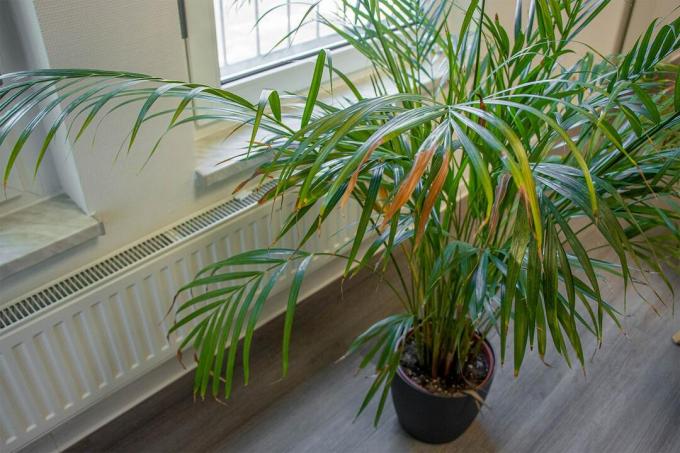
Palm leaves hanging: save yucca & co
Palm trees give the home a southern flair. However, if Yucca & Co. let their leaves droop, their sight is rather desolate. The causes of hanging palm fronds vary. A rescue attempt is always worthwhile.
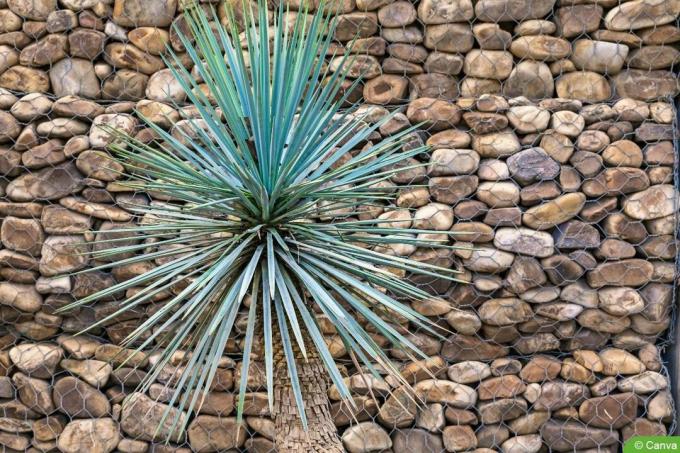
Blue palm lily, Yucca rostrata: 12 tips for care & Co.
The blue yucca (Yucca rostrata) is one of the most fascinating Yucca species. Since it hardly requires any care, it is also suitable for the office. Planted in the garden, it is considered hardy when it is dry.
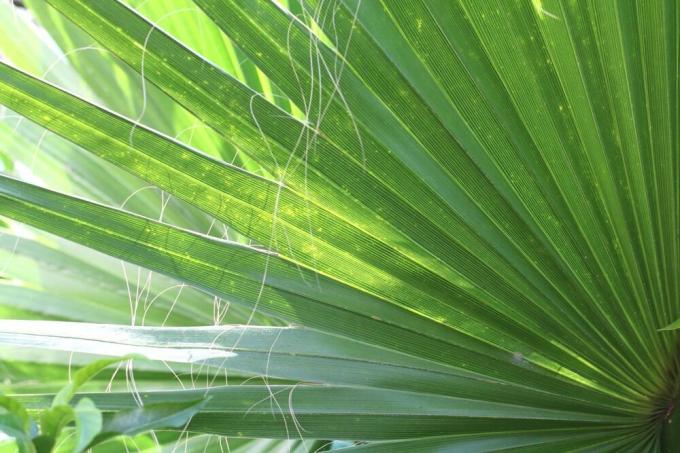
Washington Palm: Care From A-Z | Overwinter Washingtonia robusta
The Washington palm is a decorative plant that can grow to an impressive size. Due to the lack of winter hardiness, the plant is usually kept indoors in this country. When it comes to care, the palm makes certain demands so that healthy development can occur.

Areca palm, Dypsis lutescens: basics of care
The Areca Palm is a beautiful plant for indoor greenery. When it comes to care and location, the palm has certain requirements, if these are met, the plant will thrive. In order for the plant to grow constantly green, it needs the right lighting conditions.
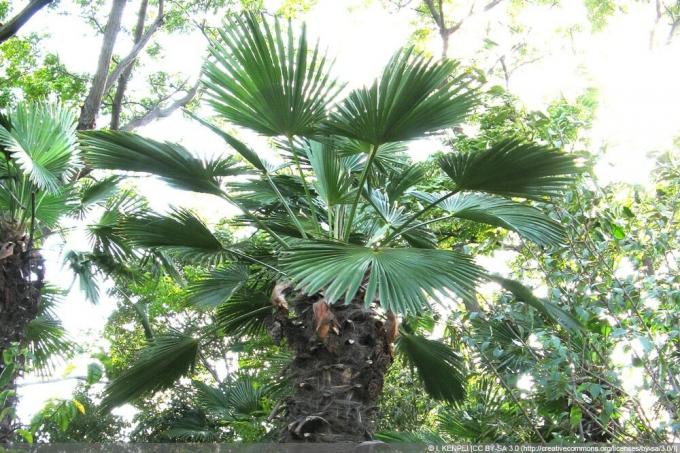
Wagner's hemp palm, Trachycarpus wagnerianus: Care from A-Z
If you want exotic flair in your garden or on your terrace, you can't avoid Wagner's hemp palm. No wonder: the extremely decorative umbrella palm not only looks impressive, but is also very robust. More about this is here.

Candle palm lily, Yucca Gloriosa – Care from A-Z | Is she hardy?
A yucca is better known to most as an exotic houseplant, the candle palm lily (bot. Yucca gloriosa) is also ideal as an outdoor plant, bringing a touch of tropical flair to your garden.
